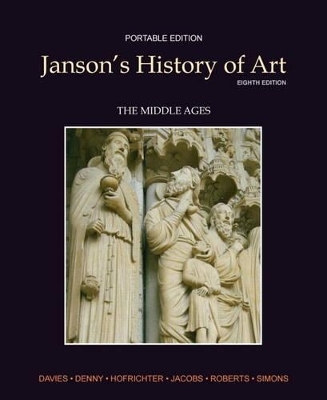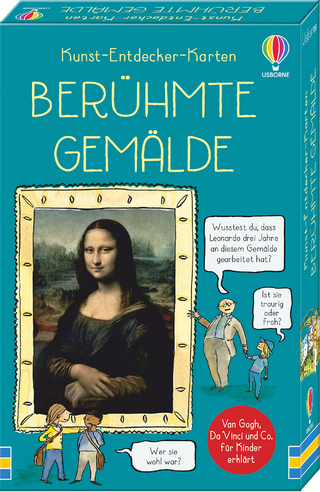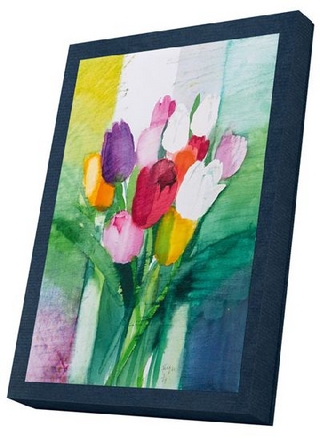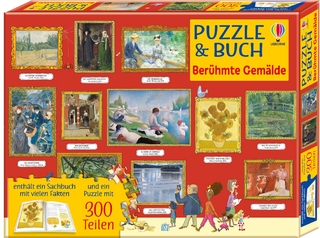
Janson's History of Art Portable Edition Book 2
Pearson
978-0-205-17614-4 (ISBN)
- Titel ist leider vergriffen;
keine Neuauflage - Artikel merken
Packages
Access codes for Pearson's MyLab & Mastering products may not be included when purchasing or renting from companies other than Pearson; check with the seller before completing your purchase.
Used or rental books
If you rent or purchase a used book with an access code, the access code may have been redeemed previously and you may have to purchase a new access code.
Access codes
Access codes that are purchased from sellers other than Pearson carry a higher risk of being either the wrong ISBN or a previously redeemed code. Check with the seller prior to purchase.
--For courses in the History of Art.
Rewritten and reorganized, this new edition weaves together the most recent scholarship, the most current thinking in art history, and the most innovative online supplements, including MyArtsLab and the Prentice Hall Digital Art Library. Experience the new Janson and re-experience the history of art.
The Portable Edition of Janson’s History of Art, Eighth Edition features four lightweight, paperback books packaged together along with optional access to a powerful student website, www.myartslab.com, making the text more student friendly than ever. Janson’s History of Art is still available in the original hardcover edition and in Volume I and Volume II splits. The Portable Edition is comprised of four books, each representing a major period of art history:
Long established as the classic and seminal introduction to art of the Western world, the Eighth Edition of Janson's History of Art is groundbreaking. When Harry Abrams first published the History of Art in 1962, John F. Kennedy occupied the White House, and Andy Warhol was an emerging artist. Janson offered his readers a strong focus on Western art, an important consideration of technique and style, and a clear point of view. The History of Art, said Janson, was not just a stringing together of historically significant objects, but the writing of a story about their interconnections, a history of styles and of stylistic change. Janson’s text focused on the visual and technical characteristics of the objects he discussed, often in extraordinarily eloquent language. Janson’s History of Art helped to establish the canon of art history for many generations of scholars.
The new Eighth Edition, although revised to remain current with new discoveries and scholarship, continues to follow Janson’s lead in important ways: It is limited to the Western tradition, with a chapter on Islamic art and its relationship to Western art. It keeps the focus of the discussion on the object, its manufacture, and its visual character. It considers the contribution of the artist as an important part of the analysis. This edition maintains an organization along the lines established by Janson, with separate chapters on the Northern European Renaissance, the Italian Renaissance, the High Renaissance, and Baroque art, with stylistic divisions for key periods of the modern era. Also embedded in this edition is the narrative of how art has changed over time in the cultures that Europe has claimed as its patrimony.
Penelope J. E. Davies is Associate Professor at the University of Texas, Austin. She is a scholar of Greek and Roman art and architecture as well as a field archaeologist. She is author of Death and the Emperor: Roman Imperial Funerary Monuments from Augustus to Marcus Aurelius, winner of the Vasari Award. Walter B. Denny is a Professor of Art History at the University of Massachusetts at Amherst. In addition to exhibition catalogues, his publications include books on Ottoman Turkish carpets, textiles, and ceramics, and articles on miniature painting, architecture and architectural decoration. Frima Fox Hofrichter is Professor and former Chair of the History of Art and Design department at Pratt Institute. She is author of Judith Leyster, A Dutch Artist in Holland’s Golden Age, which received CAA’s Millard Meiss Publication Fund Award. Joseph Jacobs is an independent scholar, critic, and art historian of modern art in New York City. He was the curator of modern art at the John and Mable Ringling Museum of Art in Sarasota, Florida, director of the Oklahoma City Art Museum, and curator of American art at The Newark Museum, Newark, New Jersey. David L. Simon is Jetté Professor of Art at Colby College, where he received the Basset Teaching Award in 2005. Among his publications is the catalogue of Spanish and southern French Romanesque sculpture in the Metropolitan Museum of Art and The Cloisters. Ann M. Roberts, Professor of Art at Lake Forest College has published essays, articles and reviews on both Northern and Italian Renaissance topics. Her research focuses on women in the Renaissance, and her most recent publication is entitled Dominican Women and Renaissance Art:The Convent of San Domenico of Pisa. H. W. Janson was a legendary name in art history. During his long career as a teacher and scholar, he helped define the discipline through his impressive books and other publications. Anthony F. Janson forged a distinguished career as a professor, scholar, museum professional and writer. From the time of his father’s death in 1982 until 2004, he authored History of Art.
Preface xiv
Faculty and Student Resources for Teaching and Learning with Janson’s History of Art xix
Introduction xxi
PART TWO: THE MIDDLE AGES
Chapter 8: Early Jewish, Early Christian, and Byzantine Art
EARLY JEWISH ART 237
EARLY CHRISTIAN ART 240
Christian Art before Constantine 240
INFORMING ART: The Life of Jesus 241
PRIMARY SOURCES: The Book of the Popes (Liber Pontificalis) 244
Christian Art after Official Recognition of Christianity 245
MATERIALS AND TECHNIQUES: Mosaics 248
BYZANTINE ART 254
Early Byzantine Art 254
PRIMARY SOURCES: Procopius of Caesarea (Sixth Century) 258
The Iconoclastic Controversy 265
Middle Byzantine Art 265
PRIMARY SOURCES: St. Theodore the Studite (759–826 CE) 266
Late Byzantine Art 273
INFORMING ART: Biblical and Celestial Beings 273
Chapter 9: Islamic Art
Religious Architecture 280
PRIMARY SOURCES: Muhammad Ibn Mahmud Al-Amuli (Iran, 14th Century) 280
THE FORMATION OF ISLAMIC ART 281
INFORMING ART: Islam and Its Messenger 283
Secular Architecture 284
THE DEVELOPMENT OF ISLAMIC STYLE 285
Religious Architecture 285
Luxury Arts 287
ISLAMIC ART AND THE PERSIAN INHERITANCE 287
Architecture 287
Figural Art Forms in Iran 288
THE CLASSICAL AGE 290
THE ART HISTORIAN’S LENS: Spanish Islamic Art and Europe in the Middle Ages 290
The Fatimid Artistic Impact 291
The Ayyubids and the Seljuk Turks of Asia Minor 292
LATER CLASSICAL ART AND ARCHITECTURE 294
Mongol Patronage 295
Timurid Patronage 295
Mamluk Patronage 296
Nasrid Patronage: The Alhambra 299
THE THREE LATE EMPIRES 300
PRIMARY SOURCES: The Ottoman Sultan Selim II (1524–1574) 300
MATERIALS AND TECHNIQUES: The Oriental Carpet 301
The Ottomans in Europe and Asia 302
The Safavid Period in Iran 304
The Mughal Period in India 308
PRIMARY SOURCES: Abd Al-Hamid Lahori (d. 1654) 309
CONTINUITY AND CHANGE IN ISLAMIC ART 310
Chapter 10: Early Medieval Art
ANGLO-SAXON ART 314
MATERIALS AND TECHNIQUES: Metalwork 315
The Animal Style 316
HIBERNO-SAXON ART 318
Manuscripts 318
PRIMARY SOURCES: Lindisfarne Gospels 320
VIKING ART 322
CAROLINGIAN ART 324
Sculpture 324
Illuminated Books 325
Architecture 328
PRIMARY SOURCES: Hariulf (ca.1060–1143) 331
PRIMARY SOURCES: St. Angilbert (ca. 750–814) 332
OTTONIAN ART 333
Architecture 333
Metalwork 336
Ivories and Manuscripts: Conveyors of Imperial Grandeur 340
Sculpture 343
Chapter 11: Romanesque Art
FIRST EXPRESSIONS OF ROMANESQUE STYLE 349
Architecture 349
Monumental Stone Sculpture 350
MATURE ROMANESQUE 351
Pilgrimage Churches and Their Art 351
PRIMARY SOURCES: The Pilgrim’s Guide 352
Cluniac Architecture and Sculpture 356
PRIMARY SOURCES: St. Bernard of Clairvaux (1090–1153) 359
Cluniac Wall Painting 365
Cistercian Architecture and Art 366
Other Benedictine Architecture and Wall Painting 367
Book Illustration 368
THE ART HISTORIAN’S LENS: Preserving and Restoring Architecture 369
OTHER REGIONAL VARIANTS OF ROMANESQUE STYLE 372
Western France: Poitou 372
Southeastern France: Provence 373
The Holy Land 374
Tuscany 375
Germany 378
The Meuse Valley: Mosan Style 379
MATERIALS AND TECHNIQUES: Vaulting 380
Normandy and England 381
THE PARADOXICAL MEANING OF ROMANESQUE 386
Chapter 12: Gothic Art
EARLY GOTHIC ART IN FRANCE 391
Saint-Denis: Suger and the Beginnings of Gothic Architecture 391
PRIMARY SOURCES: Suger of Saint-Denis (1081–1151) 393
Chartres Cathedral 395
Laon Cathedral 397
Cathedral of Notre-Dame in Paris 398
HIGH GOTHIC ART IN FRANCE 399
The Rebuilding of Chartres Cathedral 400
PRIMARY SOURCES: Theophilus Presbyter (12th Century) 402
MATERIALS AND TECHNIQUES: Stained Glass 405
THE ART HISTORIAN’S LENS: Modules and Proportions 406
Amiens Cathedral 408
Reims Cathedral 408
RAYONNANT OR COURT STYLE 413
Sainte-Chapelle 413
Saint-Urbain in Troyes 415
Manuscript Illumination 416
LATE GOTHIC ART IN FRANCE 418
Manuscript Illumination 418
Sculpture 420
Architecture: The Flamboyant Phase 422
THE SPREAD OF GOTHIC ART 423
Spain 423
England 426
Germany 430
Glossary
Bibliography
Index
Credits
| Erscheint lt. Verlag | 28.10.2012 |
|---|---|
| Sprache | englisch |
| Themenwelt | Kunst / Musik / Theater |
| Kinder- / Jugendbuch ► Sachbücher ► Kunst / Musik | |
| ISBN-10 | 0-205-17614-3 / 0205176143 |
| ISBN-13 | 978-0-205-17614-4 / 9780205176144 |
| Zustand | Neuware |
| Haben Sie eine Frage zum Produkt? |
aus dem Bereich


